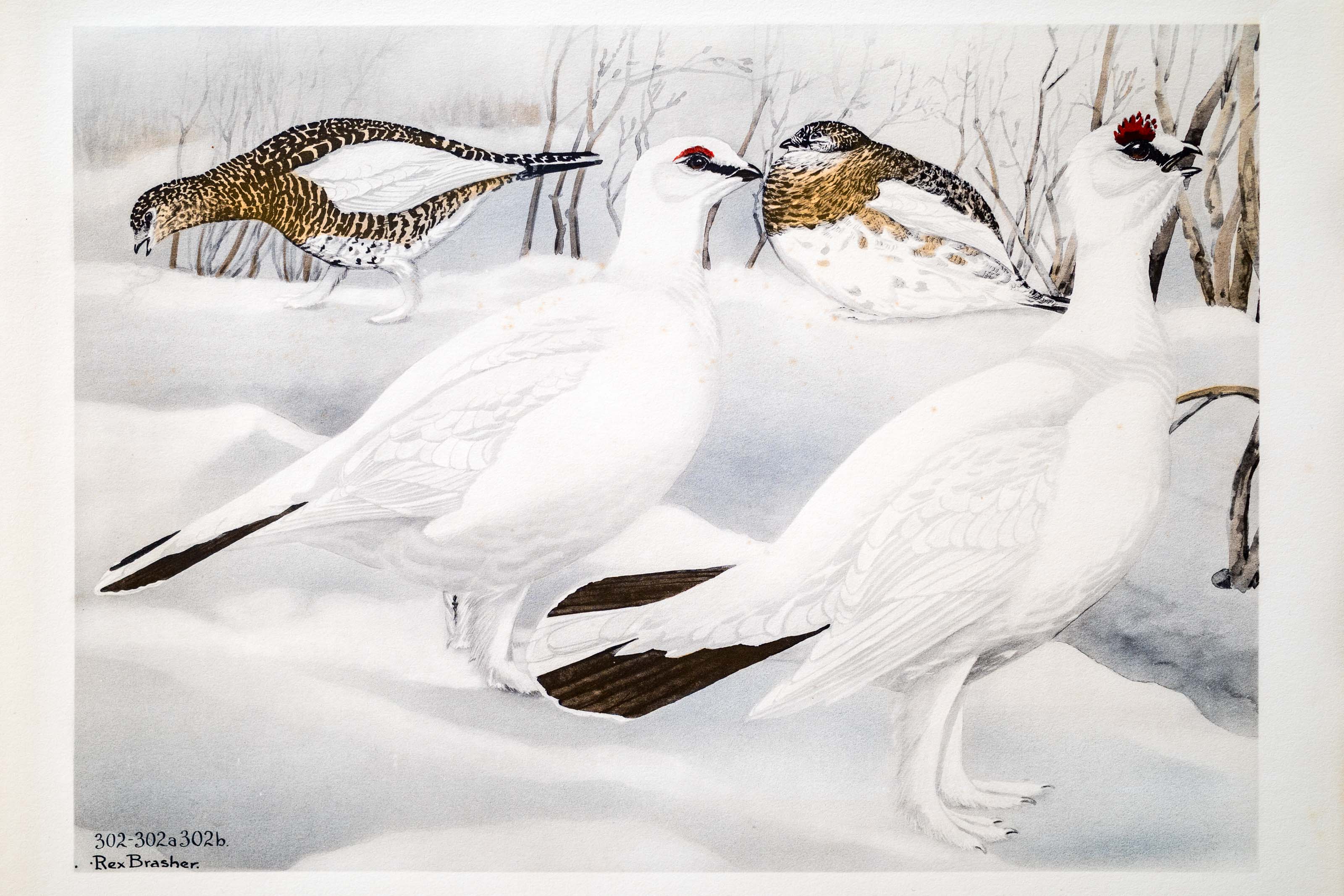
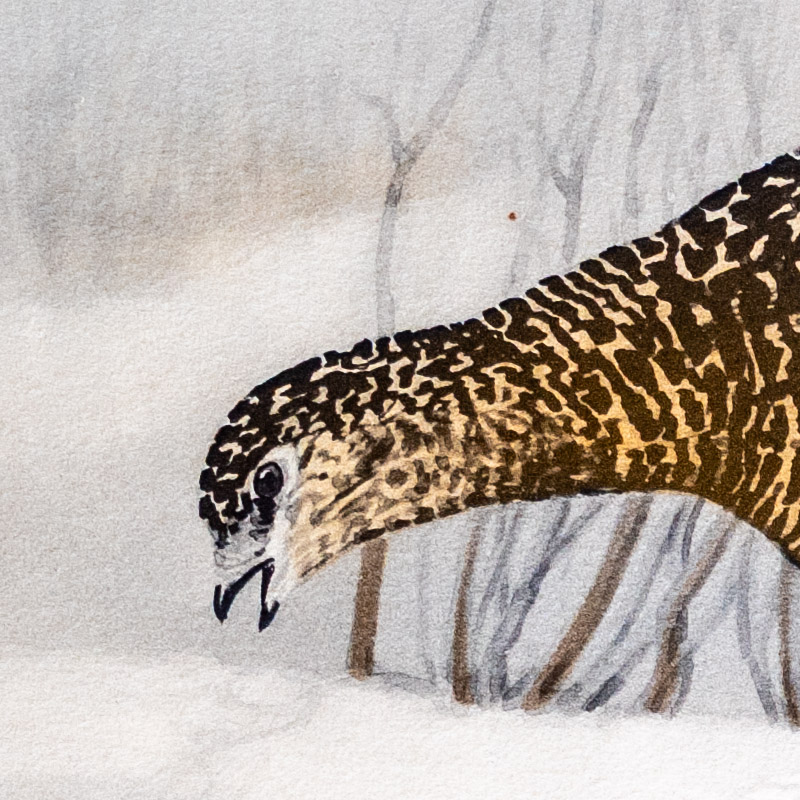
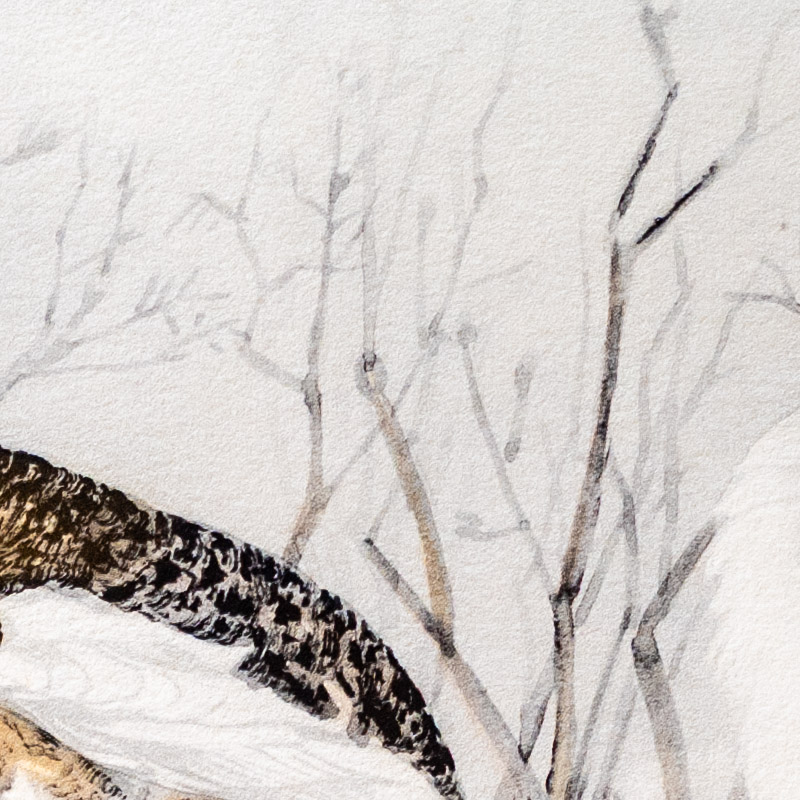
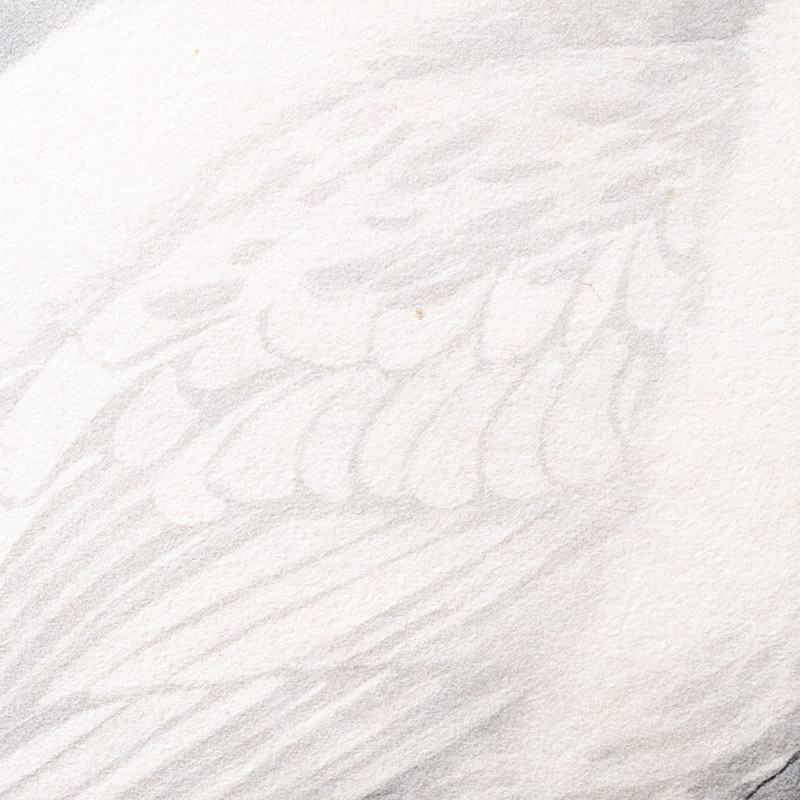
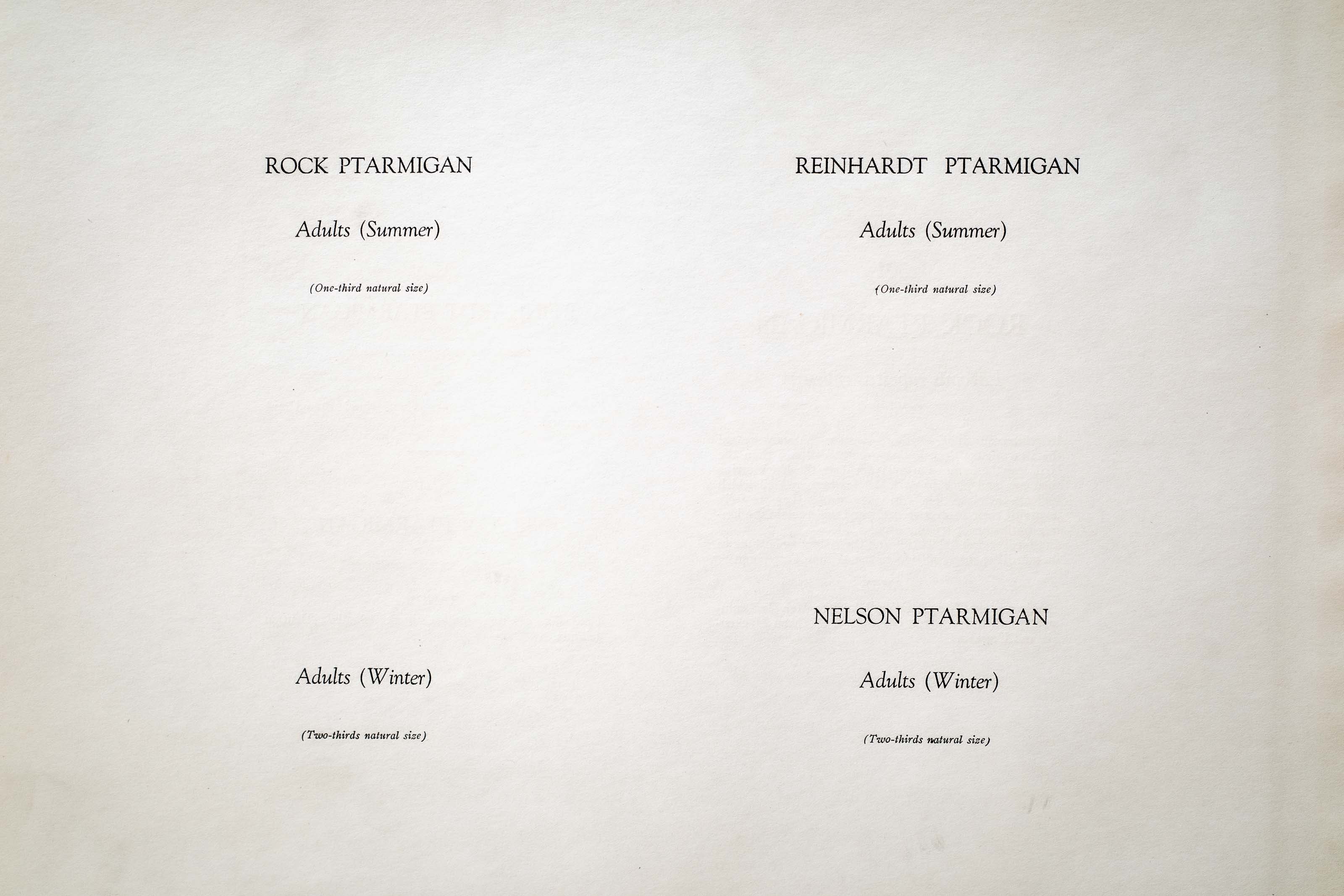
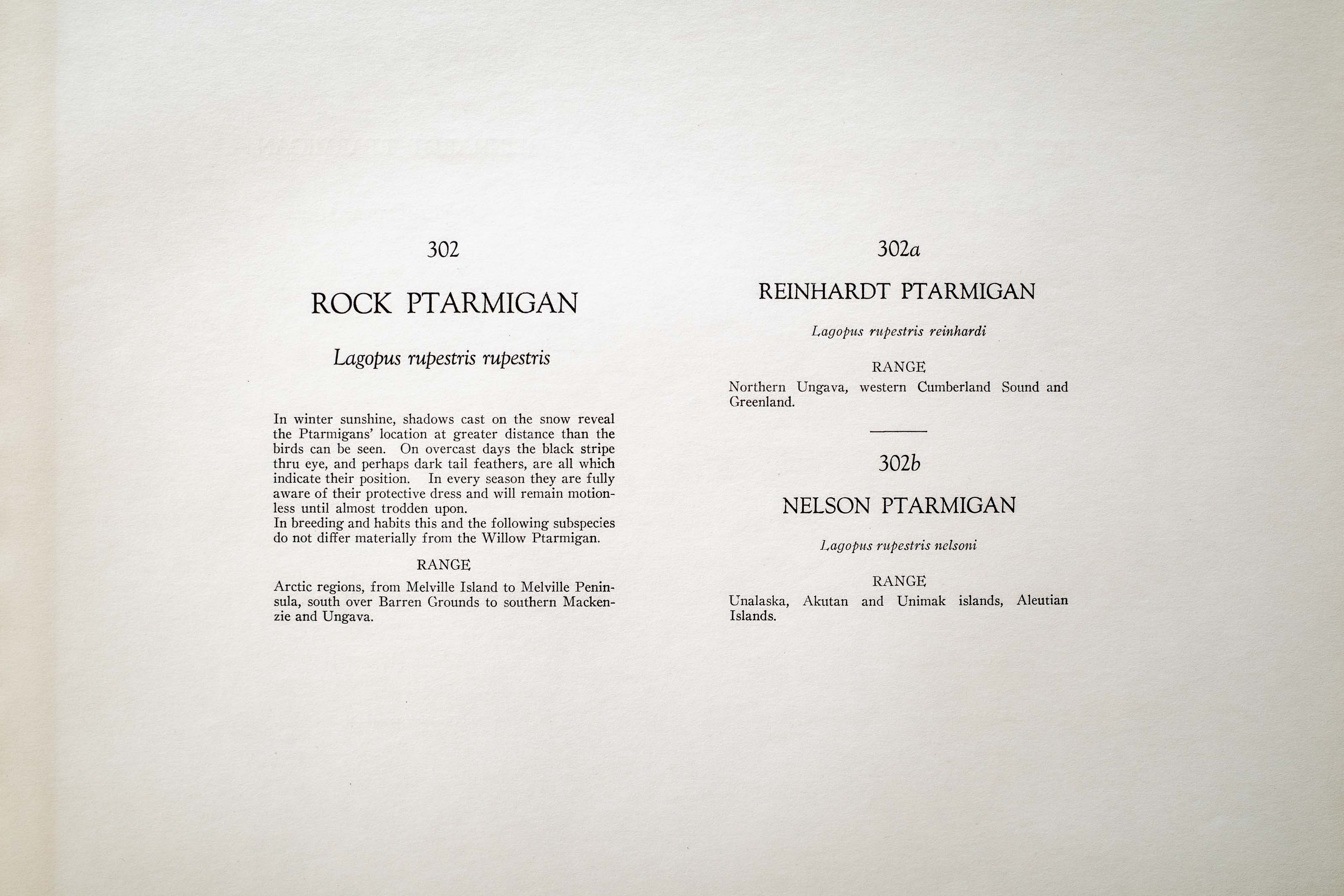

Unknown
1930
5
302-302a-302b
A team of dedicated board members, volunteers, and student interns has published every page in Volume 9. This volume includes 360 images of paintings and lyrical descriptions of birds, now available online for everyone to enjoy anywhere in the world. This is a monumental task. Each volume requires approximately 400 hours to photograph, edit, transcribe, catalog, and publish online. We need your support to complete this work.
If you're tech-savvy, have a good eye, are meticulous with details, and love structured data, please consider volunteering by emailing us at hello@rexbrasher.org.
We encourage all bird lovers and supporters to consider a monetary donation to support our mission to make Rex's work available for everyone. You can provide a one-time or recurring donation online.
In winter sunshine, shadows cast on the snow reveal the Ptarmigans' location at greater distance than the birds can be seen. On overcast days the black stripe thru eye, and perhaps dark tail feathers, are all which indicate their position. In every season they are fully aware of their protective dress and will remain motionless until almost trodden upon.
In breeding and habits this and the following subspecies do not differ materially from the Willow Ptarmigan.
Arctic regions, from Melville Island to Melville Peninsula, south over Barren Grounds to southern Mackenzie and Ungava.
Northern Ungava, western Cumberland Sound and Greenland.
Unalaska, Akutan and Unimak islands, Aleutian Islands.